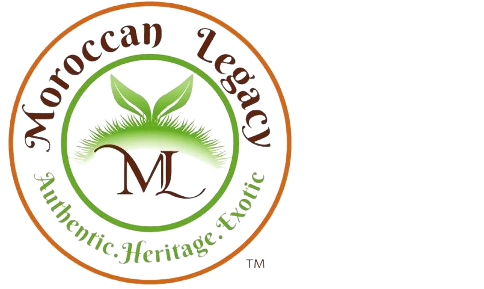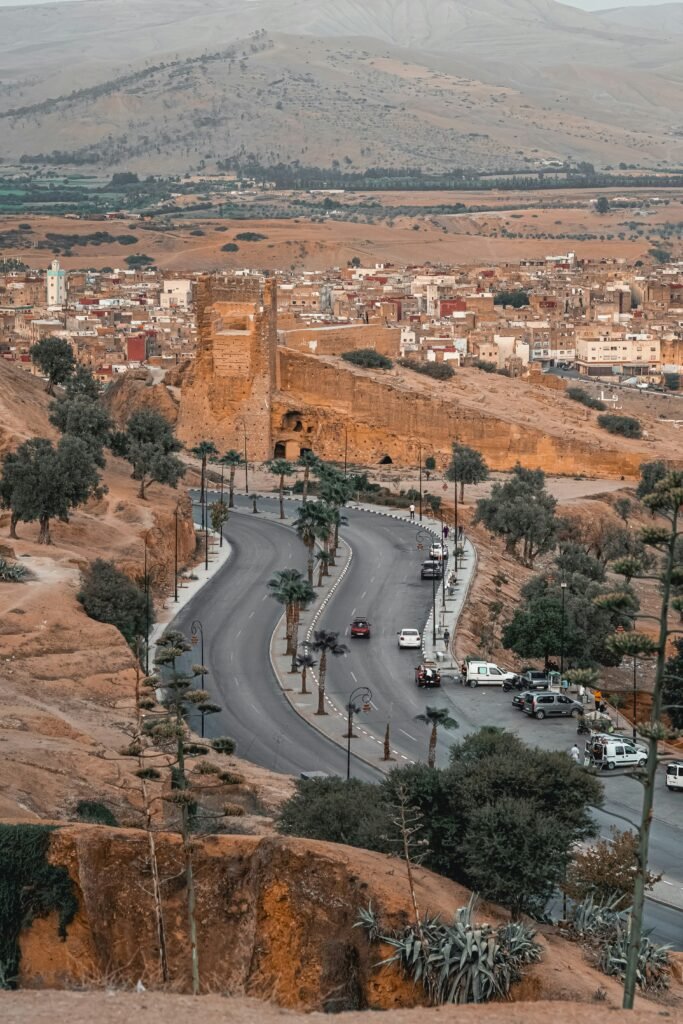Introduction
As I planned my cultural odyssey of Morocco, visiting the vibrant city of Fes was at the top of my list. With its Medieval Old City core dating back more than 1,200 years, Fes is revered as one of the most historic and archaeologically significant cities in North Africa. However, beyond Fes’ rich history and architectural antiquities lies a thriving metropolis bustling with modern conveniences and cultural attractions that have evolved alongside Moroccan traditions spanning centuries.
My trip to Fes was to explore its storied ruins and monuments and experience firsthand how this UNESCO World Heritage site has seamlessly blended ancient wonders with modern comforts while preserving timeless Moroccan customs. Through visiting bustling markets, lush gardens, exquisite handicraft workshops, lively plazas, and more, I set out on a cultural odyssey that revealed treasures, both relics of the past and lively facets of Moroccan life today.
Part 1: Ancient Wonders of Fes el-Bali
No trip to historic Fes is complete without venturing into the labyrinthine heart of the city – the walled Medina of Fes el-Bali. Declared a World Heritage Site in 1981, Fes el-Bali is considered the world’s largest car-free urban area and one of the best-preserved medieval cities. Narrow alleys wind between buildings constructed from pisé – a mixture of earth, sand, and water that has stood the test for centuries.
Stepping into this living museum was like being transported back to another era. The palpable history was enhanced by knowing that these same streets and structures had stood since the 9th century when Fes was established as the capital of Morocco. Majestic mosques, ancient Madrasas (Islamic schools), fondouks (caravanserai inns), and dwellings still occupy the dense urban fabric as they did when constructed over 800 years ago.
A particular thrill was exploring seemingly undiscovered nooks and experiencing serendipitous glimpses of daily Medina life unfolding amongst ruins of eras past. One moment, I strolled through residential quarters, which have changed little since the Middle Ages. Around the next corner, I encountered a butcher hand-cutting meat or villagers sharing tea amongst restored Zaouias (Sufi shrines). It was magical to be immersed simultaneously in Moorish antiquity and present-day Moroccan culture.
The crowning architectural wonders of Fes el-Bali are its landmark mosques. The 8th-century Great Mosque of Fes el-Jdid, with its forest of knotted wooden columns and delicate stucco archways, left me in awe. Nearby, the ornate minaret and prayer hall of the Al-Qarawiyyin Mosque – considered the oldest university in the world – gave a glimpse of the heights of Moroccan artistry from centuries past. Alongside tourists exploring ruins, locals engaged in daily prayers that showcased Fes’ living role as a center of Islamic heritage.
Part 2: Intricate Craftsmanship in the Medina
One of the most enlightening experiences in Fes el-Bali was witnessing its renowned craftsmanship, which is still practiced using centuries-old techniques. The Medina’s bustling souks (markets), workshops, and ateliers keep traditional Moroccan design alive.
Artisanal tanneries where masters cure and dye leather using natural plants created an overwhelming cacophony of odors but also intrigued with their antiquated methods. Metalworkers hammered elaborate designs into brass lanterns and trays replicating Moorish motifs from the 12th century. Weavers sat cross-legged, creating kilims (rugs) on looms as their ancestors had for eons, while potters threw and glazed ceramics as they had since before the Roman era.
Perhaps most renowned are Fes’ woodworkers and marble carvers whose talents adorn palaces worldwide. Elegant doors, panels, and furnishings were carved by hand from cedar, including the rijs – an iconic geometric grid pattern dating to the 9th century. Elsewhere, sculptors chiseled ornate vasques, fountains, and façade details from vibrantly veined marble from the nearby Middle Atlas Mountains.
Part 3: A Culinary and Cultural Cornucopia
Exploring Fes beyond Medina’s workshops and ruination, I discovered the city’s modern charms and cultural heritage. Picturesque public gardens attracted families and students relaxing beside ornate fountains and reflecting pools. Lively plazas hosted communal gatherings and artistic performances featuring Gnaoua music, Berber folk dancing, and storytelling.
For glimpses into Moroccan hospitality, culinary traditions, and daily life, local Palais (Riads) and their shaded central courtyards welcomed guests. Over mint tea and pastries, hosts proudly showed off their restored dwellings while explaining Moroccan architectural styles and regional customs. Luxurious hammams (steam baths) offered blissful respites and rituals descended from the Persian-Arab bathing culture of the 11th century.
Incredibly fascinating was Fes’ renowned gastronomic scene rooted in Morocco’s ethnic diversity. Exquisite tagines emerged from steamy clay pots perfumed with spices brought since the days of the Silk Road. Hand-rolled couscous was prepared in monumental communal methods since Amazigh (Berber) antiquity. Bread baked in tabun ovens, savory pastillas on pastry leaves, and mint-steeped salads accompanied meals, giving tastes of Berber, Andalusian, Middle Eastern, and Saharan influences through the centuries.
Part 4: Fes’ Modern Delights and Developments
While profoundly honoring antiquities and traditions, Fes has also steadily evolved new cultural attractions and modern comforts. Strolling central Ville Nouvelle from the imposing Royal Palace revealed regal French architecture alongside avant-garde galleries and boutique hotels. Trendy patio cafes served international cuisine alongside Moroccan staples in chic settings overlooking fountains and flowering gardens.
State-of-the-art museums such as the Dar Jamai showcased Morocco’s artistic heritage and contemporary global influences using cutting-edge exhibits. Elsewhere, the Batha Museum ingeniously housed its trove of archaeological discoveries within a beautifully restored 9th-century palace. Ultra-modern megaplexes and shopping centers stocked international brands alongside traditional kiosks selling artisanal goods – an accessible window into Moroccan life past and present.
Outlying suburbs hosted amenities like golf clubs, water parks, and entertainment complexes perfect for familial recreation. Luxurious spas and hammams employed the latest holistic techniques – from Moroccan gommage exfoliations to aromatherapy massages – elevating Morocco’s wellness traditions to global standards. Meandering back roads revealed countryside vistas and rural villages that have changed little over the past millennium, accessible via new highways encouraging sustainable agro-economic tourism.
Part 5: Traditional Entertainment and Events
One of the highlights of my Fes trip was communal cultural activities, especially during festivals celebrated annually for generations. At street carnivals for religious occasions such as Mouloud, performers donned lavish costumes reenacting historical tales. Crowds of locals and visitors cheered traditional music shows and folkloric parades featuring Ghiwane music accompanied by lutes and flutes.
Elsewhere, zajal poetry competitions drew large audiences to plazas for bards reciting spontaneous rhyming verse – some composed on the spot – as entertainment enjoyed since medieval Fes. Equestrian displays featuring beautiful Arabian horses trained in the region’s timeless equine culture dating to pre-Islamic Berber tribes impressed onlookers in stadiums.
During Ramadan at mosques and within Medina homes, I joined fast-breaking sunset iftars appreciating togetherness, hospitality, and sumptuous dishes prepared for the blessed month. At seasonal festivals like Mouloud, spectators gathered at shrines to Sufi saints dancing and singing zikr performances invoking spiritual exaltation through community and music – rituals unchanged for centuries. These revelries spotlighting Moroccan heritage brought warmth, connection, and a glimpse into festive traditions little altered through the ages.
Part 6: Rural Escapes and the Kingdom’s Heritage
To witness more of Morocco’s unspoiled cultural heritage during downtime from city sightseeing, day trips led me to rural villages and historic sites. Winding coastal routes from Fes brought breathtaking Atlantic vistas from dizzying cliffs and untrammeled beaches prized by surfers. Elsewhere, piste roads switchbacked through the cedar-cloaked Middle Atlas Mountains, carpeted in spring by wildflowers.
Elsewhere, I explored the evocative kasbah town of Moulay Idriss, considered a holy Islamic pilgrimage site since its 8th-century founding and home to exquisite zellij tilework and woodcarving. Traditional Berber villages displayed vibrant textiles, pottery, and skilled horsemanship, which had been slightly altered by centuries of agricultural occupations.
Part 7: A Culture Steeped in History
Each experience gave me deeper insight into Morocco’s vibrant cultural history, from its beginnings as the Berber Kingdom of Mauretania over 2,000 years ago through domination by Phoenicians, Romans, and Umayyad caliphs, Moorish Almohad and Marinid dynasties shaped present-day Moroccan social structures, architecture, and arts. Under 16 centuries of Muslim rule, Andalusian influences fused with indigenous Amazigh traditions, cementing Morocco’s unique cultural identity.
The country’s pivotal location on ancient trans-Saharan trade routes infused Berber, Arab, sub-Saharan, and European influences. Foreign invasions by Portuguese, Spanish, and French powers only reinforced nationalistic pride in Morocco’s Arabic and Tamazight languages and Islamic traditions. Today, Islam remains the dominant religion, with over 99% of Moroccans identifying as Sunni Muslims, evident through ornate mosques and calligraphic script ubiquitous throughout the landscape.
Witnessing distinct rural Berber communities in the High and Middle Atlas Mountains reinforced how Morocco’s ethnic diversity evolved. Amazigh cultural markers like indigenous languages, agricultural practices, dress, artisanal crafts, and spiritual ceremonies still thrive alongside urban Moroccan-Arab traditions. This fusion formed a tolerant, progressive society while maintaining regional distinguishments – a testament to Morocco’s ability to synthesize a wealth of histories.
Part 8: Traditions Spanning Generations
What struck me most about Morocco was how seamlessly traditions have endured through centuries of flux. Whether festivities, craftsmanship, architecture, or cuisine, practices have evolved gradually rather than facing rapid alteration. Continuity between generations ensures cultural heritage remains deeply ingrained in Moroccan identity and communities.
This resonated through multi-generational artisan families proudly transmitting woodworking, tile-making, and weaving techniques, some developed in Moorish Morocco. Children learning from parents and grandparents at workshops fostered skills that continued for centuries. Similarly, communal gatherings for holidays, weddings, and relaxations saw multiple age cohorts bonding through shared customs, music, and feasts.
Moroccans’ devout yet progressive Sufi-influenced Islamic practices also smoothly blended antiquity with modernity. Traditional Maliki jurisprudence inspired morals, whereas youth maintained vibrant social lives. Women graduating from universities in hijabs demonstrated how Morocco empowered female advancement while respecting cultural conservatisms – balancing dynamics enabling rich heritage to flourish alongside new opportunities.
Through these intergenerational connections and gradual modifications, Morocco safeguards an exceptional cultural patrimony while progressing as a progressive Islamic state. This formula of maintaining uniqueness through continuity and adaptation left me with tremendous respect and appreciation for Morocco’s ability to prosper through change while fiercely protecting its national heritage.


